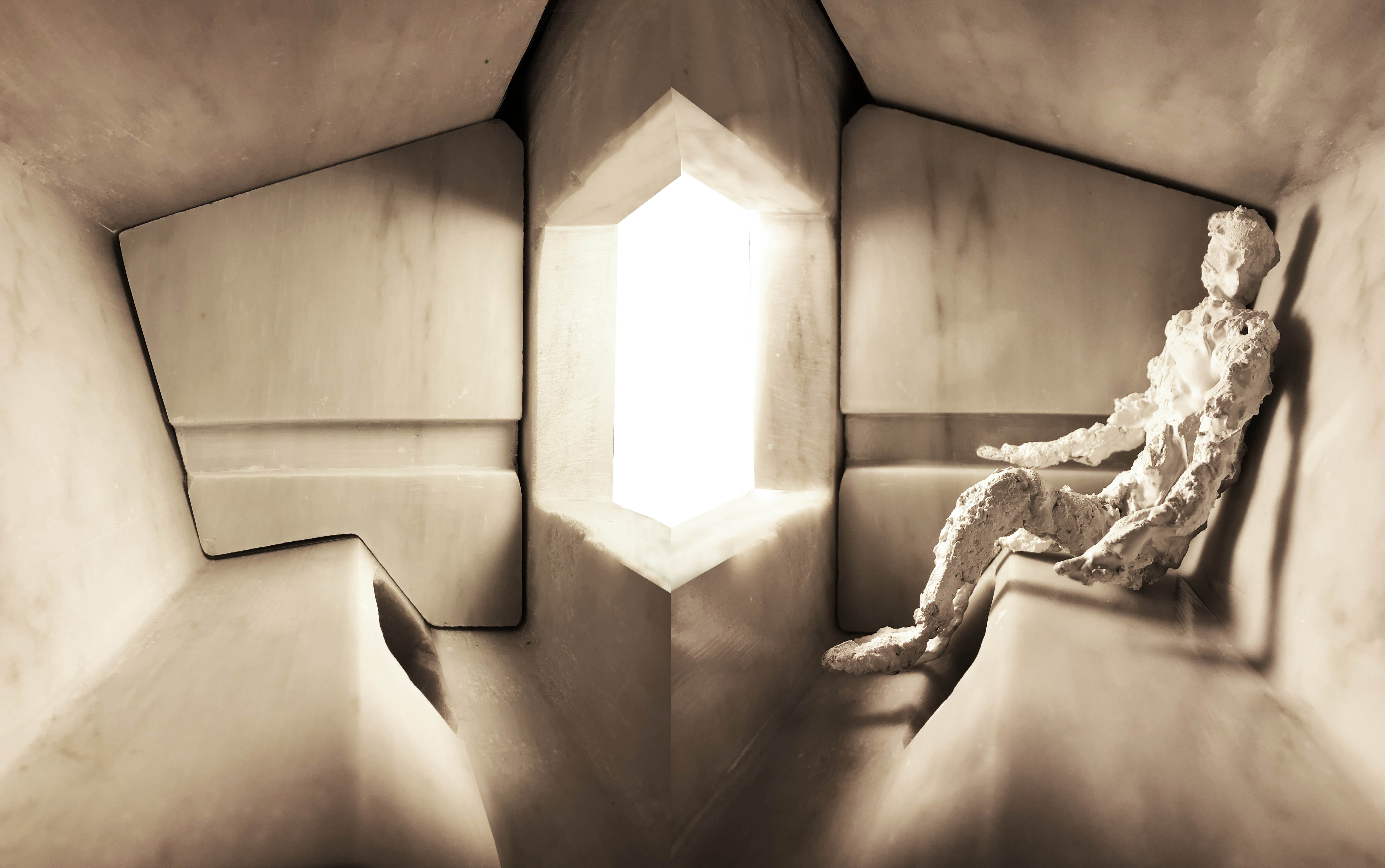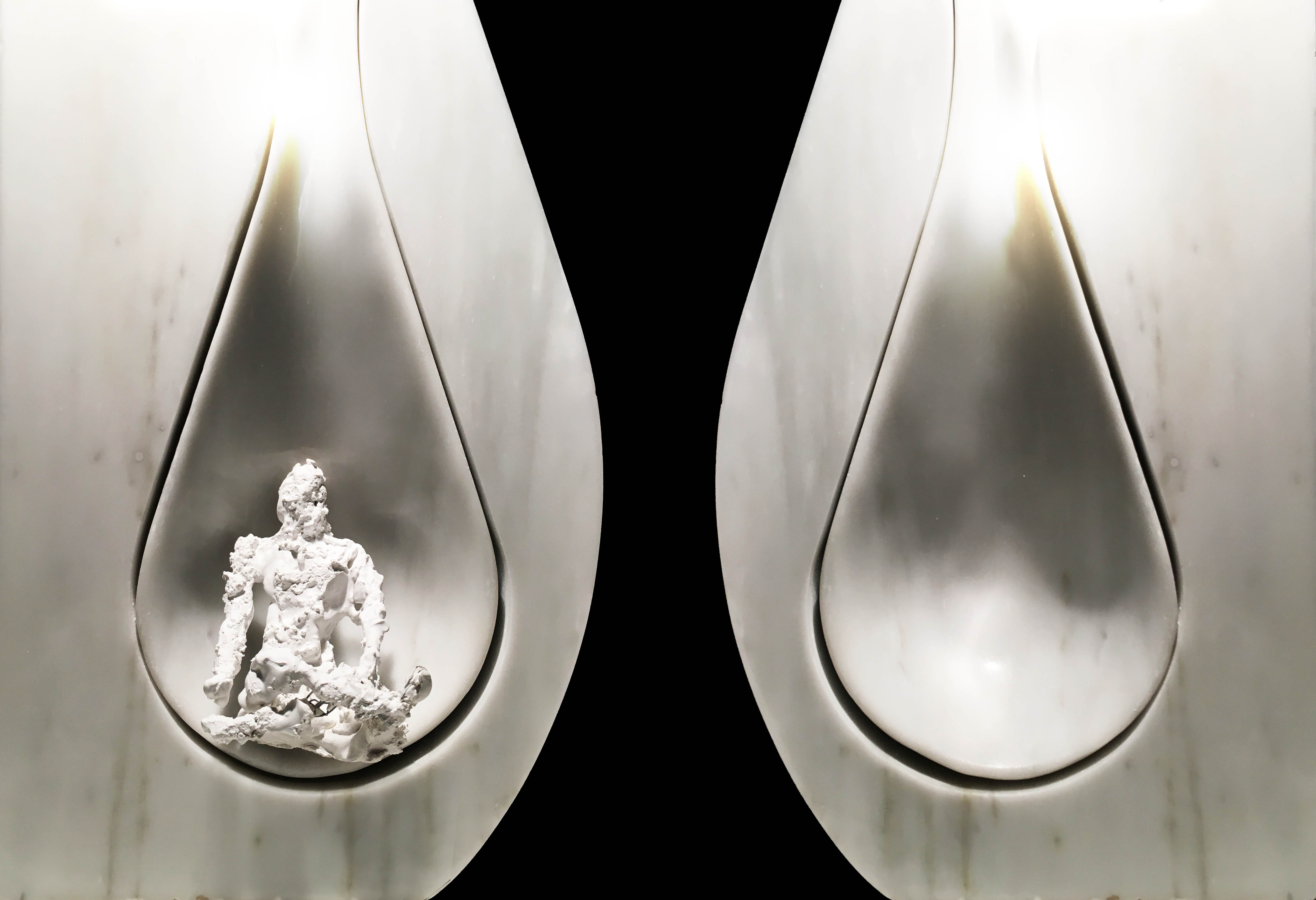
Marble bothy: Proposal for an inhabitable sculpture
I heard it mentioned in the cellars. They described a kind of phantom object with no apparent author, no owner. Nobody knew where it was and if it even existed. Most people thought it was a myth, a piece of folklore.
But I remember it vividly. It was crystalline white, a kind of colour normally only perceived in your mind’s eye. How did it get here? Up in the mountains it was utterly improbable, it looked almost extraterrestrial.

Photograph by Piercarlo Quecchia
People called it a hut although I never knew why. It was more like an artefact from a past civilisation. On the front and back were giant symbols. It was immaculate, I got the impression someone was religiously polishing it every night.


In the middle was a crack like an entry to a cave. From here I realised I could climb up and inside the marble block. Gargantuan pieces had somehow been removed from the inside leaving negative space.


I then found myself contained in a bulbous form which reminded me of a teardrop, clouds and rays passing over my head. It was as if each of these spaces had been intimately sculpted to subsume my body. Being inside such a contained mass was intimidating but also liberating - the silence, the gravitas. With time came transcendence.


The project requires a single piece of pure white marble measuring 4mx3.6mx3.2m, into which three inner spaces will be sculpted. These marble spaces embody more than 200 million years of evolution allowing one to confront present reality through the structure of existence that preceded it. Such an inhabitable sculpture will offer an intense aesthetic encounter with a precious material intensified by sculpted space and the passing of time.

Photograph by Piercarlo Quecchia
Support from Artco Studio, Seravezza
2018 - ongoing